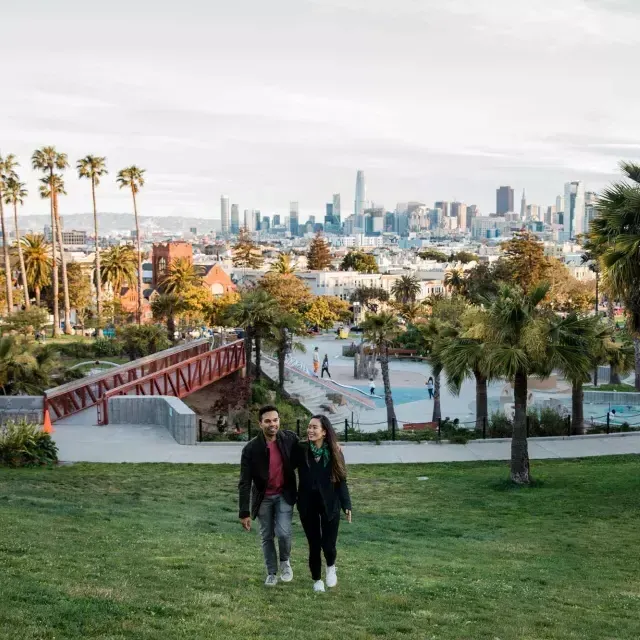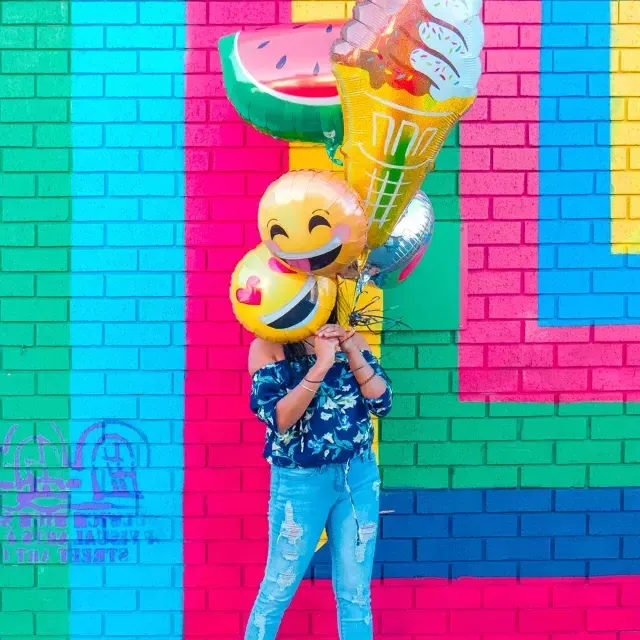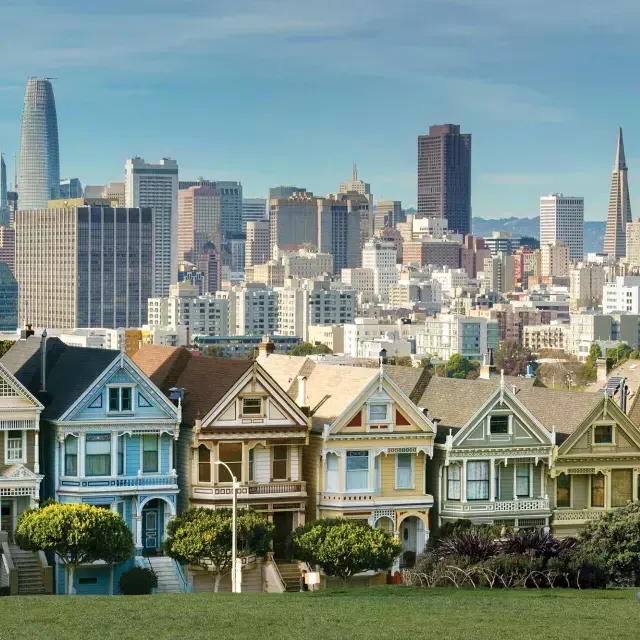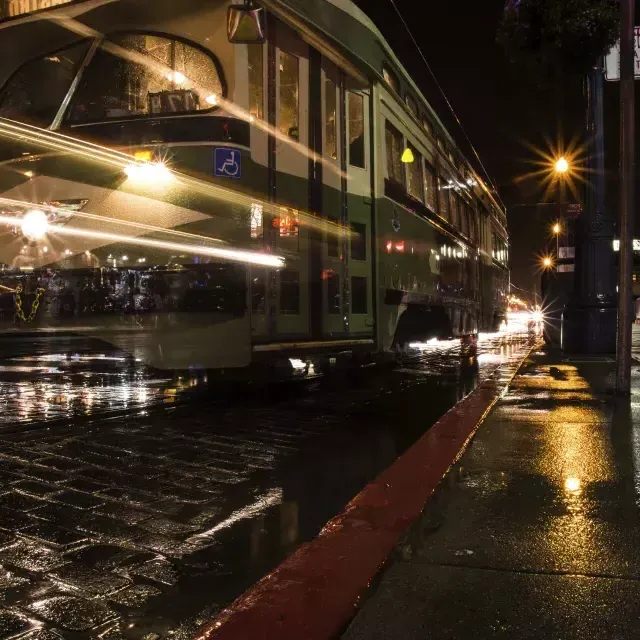
Uncovering San Francisco's LGBTQ+ History in the City's Most Popular ‘Hoods
Find LGBTQ+ history throughout San Francisco's different gay neighborhoods, from the Castro to SOMA.
San Francisco has long been a beacon of inclusivity, inviting travelers from across the globe with the promise of freedom and liberation, not to mention a perfect climate and natural beauty.
As a result, multiple landmarks define San Francisco’s queer history and now stand as a testament to the city’s enduring spirit of acceptance and resilience.
Travelers can walk in the footsteps of Harvey Milk under the Castro’s huge rainbow flag, explore thriving community hubs in SoMa, and pay a visit to the cultural institutions of Golden Gate Park. On this journey through the city’s hippest neighborhoods, you’ll uncover a complex web of history and culture.
Castro District
Harvey Milk’s Camera Shop
Strolling through San Francisco’s gayborhood, a stop at the site of Harvey Milk’s camera shop, Castro Camera, is a must. Today, it has transformed into a vibrant hub known as Queer A.F. (Queer Arts Featured), and houses an artist-led gallery, a unique boutique, and serves as an exciting event space.
Nearby, you’ll also find historical points of interest like the Pink Triangle Memorial and Twin Peaks Tavern, a gay bar that opened in 1935. The bar became iconic in 1972 when it pulled back its curtains so passersby could see inside, a pivotal moment for LGBTQ+ visibility. Designated as a San Francisco landmark in 2013, it remains a symbol of progress as well as a great place to enjoy a cocktail. Have a spritz under its Tiffany-style lamps for a true Castro experience.
As you stroll through the Castro in search of a late-night bite, consider Orphan Andy’s, where French toast and chicken-fried steak smothered in gravy await. Dennis Ziebell and Bill Pung, co-owners of this 50s-style diner, have been in business since the 1970s, catering to visitors’ cravings 24 hours a day.
Polk Gulch
San Francisco’s first gayborhood
Little known fact: Polk Street was the site of the city’s first Pride parade, making Polk Gulch the first gayborhood in San Francisco. At the center of it all, Cinch Saloon, a cherished local haunt, doles out brews alongside nearly five decades of history. This gay-friendly bar beckons a diverse crowd with its calendar of events, offering a warm and inclusive atmosphere to unwind and mingle.
Further up Polk Street, find a cute ‘fit at ReLove. This queer-BIPOC-owned business is not just a resale boutique; it’s a curated collection of vintage, designer, and indie labels, where each item is handpicked with style in mind. ReLove is also a community space that encourages personal expression and believes in style without breaking the bank.
For a sweet treat, visit Hot Cookie. This San Francisco bakery’s second location on Polk (its first location is located in the Castro) is a go-to spot for fresh-baked, suggestively-named cookies.
SoMa
Leather & LGBTQ Cultural District
Eagle Plaza in San Francisco’s South of Market (SoMa) neighborhood has breathed new life into a once-underused street, creating a haven where our community can come together and celebrate our common history.
Notably, SF Eagle is the first leather bar in the country to receive historical landmark status and is the party epicenter during Folsom Street Fair. This relaxed hangout in the LEATHER & LGBT Cultural District creates an inviting space for all to enjoy—daddies, otters, and pups included.
Before or after visiting SF Eagle, take a stroll around SoMa and admire the murals created by Simon Malvaez. A proud queer immigrant, Simon’s work sheds light on the intersection of San Francisco’s LGBTQ+ and Latinx communities.
Following your art walk, make a pit stop at Mr. S Leather for some goodies. This renowned clothing and sportswear shop is celebrated for its top-notch leather, rubber, and neoprene attire.
After gearing up, make your way to Powerhouse. This local leather bar has long reigned as the ultimate SoMa club destination. From drag shows and gogos to lively happy hours, this venue hosts a plethora of events for circuit queens and heavy hitters.
There's also Oasis, owned and operated by San Francisco's first Drag Laureate, D'Arcy Drollinger. A wide variety of can't-miss concerts, performances, and theme nights cater to every corner of the community. And don't forget to visit the newly reopened Stud bar at their new address, 1123 Folsom St. This iconic queer bar has found a new home in SoMa and is better than ever.
Mission District
Clarion Alley Murals
In the heart of San Francisco’s vibrant Mission District, Clarion Alley has been transformed into a giant canvas with over 700 murals created by local artists who bring together social, economic, racial, and environmental justice narratives.
After your tour of Clarion Alley, grab some sandwiches and refreshments at Bi-Rite Market for a picnic in the park. Take a short walk to the top of Dolores Park at 20th and Church St., affectionately known to locals as “gay beach" (or "the fruit shelf"), and soak in its unique charm, fun vibes, and breathtaking views of the city skyline.
When the sun sets, there are plenty of top-rated bars to visit in the Mission. The district is particularly known for its great queer spaces, such as El Rio, Jolene’s, Lone Palm, and Mother. Additionally, you'll find a predominantly queer crowd at the Make Out Room.
Golden Gate Park
National AIDS Memorial Grove
Tucked inside Golden Gate Park, you’ll find the National AIDS Memorial Grove, a serene, spiritual oasis. Its inception dates back to 1989, a crucial period during the devastating AIDS crisis. The purpose of this sacred space was to offer solace to those affected by grief. It endures as a meticulously nurtured woodland retreat, an enclave for quiet introspection.
As you walk through the lush undergrowth beneath towering ferns, you’ll come across numerous stones etched with the names of those lost to AIDS.
Among them, a “Circle of Friends” bears the weighty inscription of no fewer than 2,500 names. The impact of the Grove and its memorials is undeniably profound, a poignant reminder of the lives lost.
Golden Gate Park, a sprawling green expanse situated between San Francisco’s Richmond and Sunset Districts, owes its existence to early environmentalists with a vision to transform barren sand dunes into a lush forest. The park starts in Haight-Ashbury and spans over 1,000 acres to picturesque Ocean Beach, making it the largest urban park in the United States.












